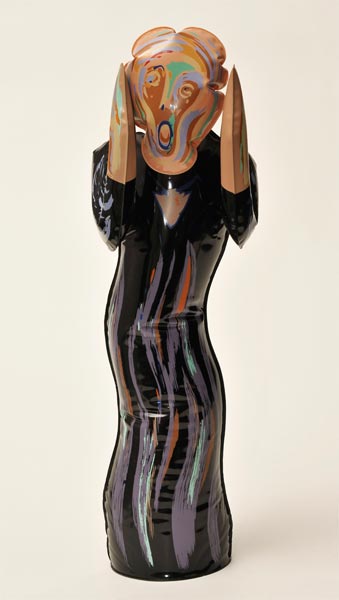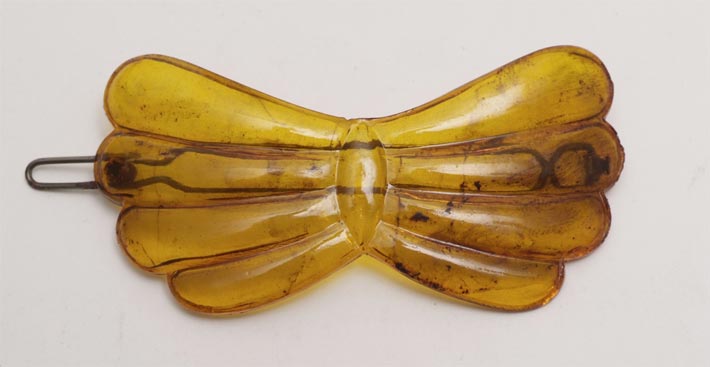
beautyme collections culture cuisine motor music search
 fig.: "Der Schrei" als aufblasbare Kunststofffigur, Motiv nach einem Gemälde von Edvard Munch Robert Fishbone, On The Wall Productions, Inc., USA,1993 Kategorie: Relieftranspositionen (C) Werkbundarchiv – Museum der Dinge/ Armin Herrmann. Exhibition 'Evil Things – An encyclopaedia of bad taste' from 19 February – 6 July 2014, Hofmobiliendepot/Imperial Furniture Collection Vienna. |
What's the difference between evil and good design?
The first intuitive answer could be: when it looks good, it's good.
This answer is too simple for today's taste makers. The value of a product is more than its visual appearance. Society values the work of a designer, the production chain and the whole behaviour of a corporation. Consumers know that designers and product managers decide whether a product is made from toxic material or harms in any other way the environment such as through exploitation of nature and human resources.
Measuring 'good' and 'evil' only after visual appearance is seductively easy and far away from a pure personal decision because individual 'taste' is always influenced by 'zeitgeist'.
From 19 February 2014 on, the ones who are interested in the exploration of design can do this at the exhibition of around 500 'Evil Things' at the Hofmobiliendepot Vienna (until 6 July 2014). The exhibition 'Evil Things – An encyclopaedia of bad taste' after the concept of the Werkbundarchiv - Museum der Dinge, Berlin was presented already last year at the MKG Hamburg. It follows the theoretical work of a member of the Deutscher Werkbund, art historian Gustav E. Pazaurek who elaborated a guide for good design. Pazaurek focused mainly on the quality of design, its execution and functioning. Fashionoffice had the chance to see some of the objects (checked on 4 February) and found many nice pieces such as the inflatable figure after Edvard Munch's 'The Scream' or a fake-horn hair clasp made from celluloid. Both were set on the evil list because they are quasi copying or imitating something else. But taste changes from person to person and with times.
The categorization of environmental friendly design and production such as mentioned at the beginning of this article is relatively new. The Hofmobliendepot added around 50 objects to the exhibition for the presentation of contemporary 'error categories' as continuation of Pazaurek's early 20th century catalogue. The new errors of design objects can't be experienced visually: child labor, sexist and racist design, unfair conditions of production, pollution.
Visitors are invited to bring their things to the exhibition. On 6 July 2014, the museum will sell them at a market. The money will be donated to homeless people via Vienna's social organisation neunerhaus. Helping homeless people with money is good. The visually 'evil' design objects from the market can be recycled at the city's waste plant; other design errors (social situation of workers, pollution...) will preoccupy the world longer.
fig. below: Celluloid-Haarspangen Imitieren das natürliche Material Horn Deutschland, 1920er Jahre Kategorie: Materialsurrogate (C) Werkbundarchiv – Museum der Dinge/ Armin Herrmann. Exhibition 'Evil Things – An encyclopaedia of bad taste' from 19 February – 6 July 2014, Hofmobiliendepot/Imperial Furniture Collection Vienna.
